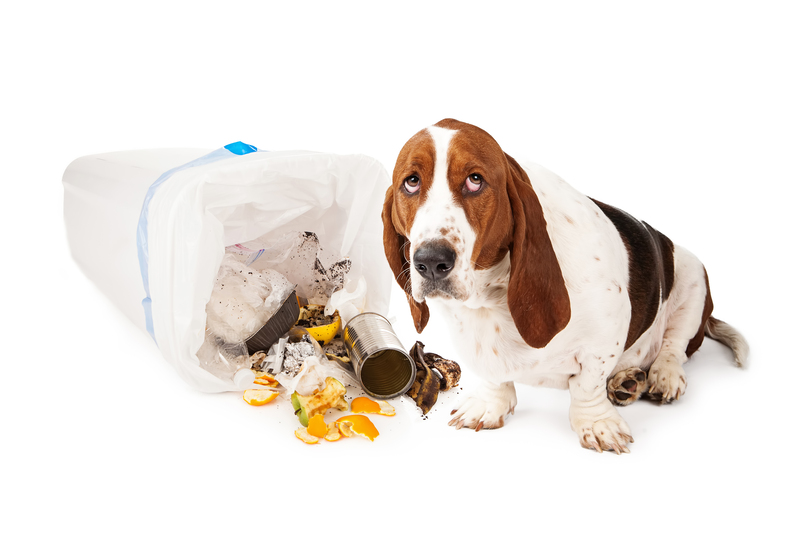Microplastic Pollution: Can We Reverse the Damage?
Microplastic pollution has become one of the most pressing environmental issues of the 21st century. These tiny plastic particles, less than 5mm in size, have permeated ecosystems across the globe, from the deepest oceans to remote mountain peaks. But the critical question remains: can we reverse the damage caused by microplastic contamination? In this comprehensive article, we'll explore the origins of microplastic pollution, its ecological and human health impacts, and the innovative solutions that hold promise for remediation and restoration.

Understanding Microplastic Pollution
What Are Microplastics?
Microplastics are minute plastic fragments resulting from the breakdown of larger plastic debris or manufactured intentionally for products like cosmetics and industrial abrasives. There are two main types:
- Primary Microplastics: Manufactured at a microscopic scale, often found in microbeads used in personal care products, synthetic fibers from clothes, and industrial abrasives.
- Secondary Microplastics: Formed through the degradation of larger plastic items such as bags, bottles, and fishing nets, primarily due to sunlight, weather, and mechanical forces.
Sources of Microplastic Pollution
The sources of microplastic contamination are alarmingly diverse. Here are some of the most significant contributors:
- Personal Care Products: Toothpaste, exfoliating scrubs, and other cosmetics often contain microbeads.
- Textiles: Washing synthetic fabrics releases microfibers into wastewater systems.
- Industry: Plastic pellets used in raw plastic manufacturing often spill and enter the environment.
- Degraded Plastics: Littered plastics disintegrate over time, resulting in secondary microplastics.
- Tire Wear: The abrasion of tires on roadways produces microplastics, which eventually wash into water systems.
- Wastewater Treatment Plants: These may fail to filter out all microplastics, allowing them to flow into rivers and oceans.
How Widespread is the Problem?
Research has demonstrated that microplastics are everywhere, from Arctic sea ice and remote alpine lakes to the guts of fish and even the air we breathe. According to a 2021 study, the world's oceans alone are polluted with over 51 trillion microplastic particles. More troublingly, microplastic pollution continues to grow unabated due to our reliance on plastic products and inadequate waste management infrastructure.
Impacts of Microplastics
Ecological Effects
- Marine Life: Microplastics are ingested by plankton, fish, birds, and mammals. This can lead to blockages, starvation, and reproductive issues, while also introducing toxic chemicals into food webs.
- Soil and Agriculture: Microplastics have been found in agricultural soils, affecting soil health and potentially reducing crop yields.
- Freshwater Systems: Lakes and rivers contaminated with microplastics impact the organisms living within and reduce drinking water quality.
Human Health Concerns
Humans are exposed to microplastics through the food we eat, the water we drink, and even the air we inhale. Research is still emerging, but initial findings indicate that these particles may trigger inflammatory responses, permeate tissues, and carry dangerous substances such as persistent organic pollutants (POPs) and heavy metals. While long-term health effects are still being researched, concerns are mounting about bioaccumulation and its consequences.
Is It Possible to Reverse Microplastic Pollution?
The Scale of the Challenge
Given the ubiquity of microplastics and their persistence in the environment, reversing microplastic damage is an enormous challenge. Plastics do not biodegrade easily; instead, they fragment into even smaller pieces, making removal incredibly difficult. The problem is multidimensional and requires action at every level--from individual consumers to global policymakers.
Technological Solutions for Microplastic Removal
Several innovative approaches are emerging to tackle microplastic pollution:
- Water Filtration Technologies: Advances in membrane filtration, reverse osmosis, and nanotechnology are enabling more effective capture of microplastics in wastewater and drinking water systems.
- Magnetic Extraction: Using magnetic nanocomposites that bind to microplastics, researchers can magnetically remove these particles from contaminated water.
- Bioremediation: Certain fungi and bacteria are being studied for their potential to degrade plastic polymers or assimilate microplastics as a food source.
- Floating Barriers: Projects like The Ocean Cleanup deploy engineered barriers that capture floating debris, including microplastics, from rivers and oceans.
Source Reduction and Behavioral Shifts
While removing existing microplastics is crucial, prevention is even more effective. Efforts should focus on:
- Reducing Single-Use Plastics: Transitioning towards biodegradable alternatives and reusable products is essential.
- Changing Consumer Habits: Public education campaigns are vital for reducing littering and promoting recycling.
- Producer Responsibility: Implementing Extended Producer Responsibility (EPR) schemes obliges companies to manage the end-of-life of their plastic products.
- Legislative Action: Bans on microbeads and regulations limiting plastic use in packaging have shown early success in tackling primary microplastic sources.
Innovative Environmental Remediation Projects
Several large-scale projects and cutting-edge technologies have emerged in recent years, including:
- The Ocean Cleanup: The Dutch non-profit is working to remove plastics, including small fragments, from rivers and the "Great Pacific Garbage Patch."
- Seabin Project: Floating trash bins installed in marinas and harbors capture floating debris and microplastics at the water's surface.
- Hyperspectral Imaging: Satellite and drone technologies are being used to map plastic pollution hotspots, improving our understanding of where and how to target clean-ups most effectively.
What Can Individuals Do?
Actionable Steps to Minimize Microplastic Pollution
Each of us has a role to play in addressing microplastic pollution. Here's how you can help:
- Avoid Products With Microbeads: Check the labels of personal care products for ingredients like polyethylene and polypropylene.
- Choose Natural Fibers: Opt for clothing made from cotton, wool, or other natural materials.
- Install Washing Machine Filters: These can catch synthetic fibers before they reach water treatment plants.
- Minimize Single-Use Plastics: Use reusable shopping bags, water bottles, and food containers.
- Support Policy Initiatives: Advocate for plastic bans, better waste management, and hold corporations accountable.
Can We Truly Reverse Microplastic Damage?
The Road to Recovery: Obstacles and Opportunities
The outlook is both sobering and hopeful. Microplastic pollution is a legacy problem--much of the plastic created since the 1950s still exists in some form today, and countless particles are embedded deep within ecosystems. Absolute reversal may be all but impossible. However, the following approaches offer real hope:
- Mitigation on All Fronts: Rapid reduction in new plastic entering the environment is critical.
- Targeted Remediation: Focused clean-ups in urban waterways, beaches, and pollution hotspots can reduce local impacts.
- Ongoing Research: Investment in new materials, degradation technologies, and health studies will improve outcomes and guide policy.
- International Cooperation: Global treaties and shared standards are needed to control the spread of microplastics across borders.
While we may not fully undo all past damage, a coordinated, multi-pronged effort can dramatically reduce future risks and restore critical aspects of environmental health.

The Future of Microplastic Pollution Management
Emerging Trends and Promising Research
The fight against microplastics is entering a new phase. Some of the promising trends include:
- Biodegradable Plastics: Researchers are developing alternatives that break down naturally, reducing the persistence of microplastics.
- Synthetic Biology: Engineered enzymes and microbes may offer paths to biodegrade existing plastics at scale.
- Circular Economy Practices: Designing products for reuse, repair, and recycling reduces single-use waste and plastic leakage.
- Global Monitoring: Real-time, satellite-based monitoring provides early warning for plastic hotspots and helps measure progress.
There is growing awareness and action from governments, businesses, and ordinary citizens. This collective response is crucial for transitioning towards a healthier, plastic-smart planet.
Conclusion: The Path Forward
Microplastic pollution is a daunting problem, but it is not insurmountable. By focusing on source reduction, supporting innovative cleanup technologies, and pushing for stronger policies, we can stem the tide. As more evidence comes to light about the dangers of microplastics--for nature and for ourselves--action becomes ever more urgent.
Although we may never fully erase all traces of microplastic pollution, we can reverse the trajectory. A global commitment to smarter materials, reduced waste, and environmental restoration offers hope for healthier ecosystems and safer, cleaner living for generations to come.
Let's join forces to fight microplastic contamination and pave the way for a more sustainable future.